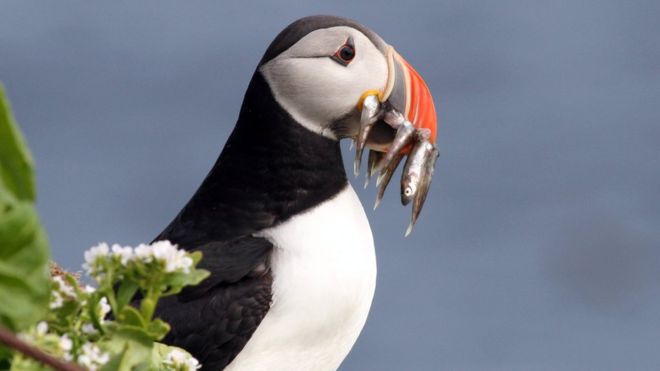The focus of last week’s episode was the coastlines of oceans, coasts are the most dynamic habitats in the world. At the boundary between both land and sea, individuals must be adapted enough to be able to survive in the areas that are covered by water during the high tide and those which are exposed to the elements during the low tide.
One thing that we typically associate with a low tide is the creation of rock pools; as a kid you would spend hours messing around in them, catching blennys and poking the sea anemones. Attenborough brings to light the sheer diversity of life that seeks refuge in these small pockets of water, acting as a sort of oasis against the Sun’s rays. However, for some sea creatures these pools act as a serving platter for an easy food source, the Ochre Seastar is once such predator which stalks limpets and plucked them off the floor.
Along the length of the Galapagos coastline sea lions gorge themselves on yellowfin tuna, these however are not hunted easily. We observe how one young bull attempted to herd a small shoal of tuna into a narrow cove, his attempts are unfortunately met to no avail. In the end, he recruits some fellow sea lions to help herd the tuna and trap them in a dead end. This remarkable display of tactics and communication enables every participating party member to feast, consuming 5 times as much protein as their typical day-to-day diet of smaller fish.
At intertidal areas in Brazil, lightfoot crabs hop across the coastline to their feeding grounds. These crabs are unique in the fact that they carefully avoid the water. The reasoning is soon identified by a moray eel leaping out of a rock pool and dragging an unsuspecting crab down into the water below. Octopuses join in this attack as well; however, they reside in small pools and wait for a crab to dash across the surface of the water. Both predators have adapted to allow themselves to move from pool to pool across the hot surface of basaltic rock, moving to a new ambush location.
We next visit an area which is bombarded by some of the most powerful waves in the world, cutting notches in the sea cliffs and creating nesting grounds for a variety of sea birds. The camera crew follow the struggles in which a pair of puffins attempt to feed their chick, known as a puffling. Doing so is no easy feat, the sheer size of the bird colony has meant that the only decent fishing grounds are 30 miles out to sea, creating a 60-mile round trip for individuals to get bring back a few fish. Despite this, the adult birds venture out and return back with a beak filled with sand eels, only for some opportunistic skuas to snatch the fish out of the puffin’s beak.
Meanwhile, some fish have actually evolved to reside on land, avoiding the strong waves and currents of the remote Pacific islands. The Pacific Leaping Blenny, lives in miniature caves 1 metre above the tide lines and migrates towards the algae-rich areas below. A male blenny attempts to attract the attention of a female below by turning the colour of its skin black and exhibiting a bright orange fin, she eventually manages to evade incoming waves before laying her eggs in his small cave.
Contrastingly, some species favour the ocean over the land. King penguins have chosen to lose their ability to fly and have instead adopted a lifestyle which means that they spend 11 months at sea. This constant action of swimming causes a considerable amount of wear and tear on the penguin’s coats, made worse by having to cross a beach which is dominated by 6 tonne elephant seals. Once on the cold Antarctic shores they spend a month barely moving, without food, whilst they moult their feathers and grow new ones.
The dynamic nature of coastlines really exhibits the nature in which some species have adapted to occupy specific niches in their surrounding habitats, constantly competing for food whilst avoiding being eaten by larger predators. There is presently 620,000 kilometres of coastline on earth, of which more than half of the world’s population lives within 60 kilometres of the sea. Recent development on coastlines as more resorts and infrastructure is made to meet the demands of humans, forcing other species to survive in other areas away from the dangers that humans exhibit.
This week is the seventh and final episode in this series, titled “Our Blue Planet” and promises to be another exceptional display of the nature present in our oceans.
James Deed
Image: University of Southampton

